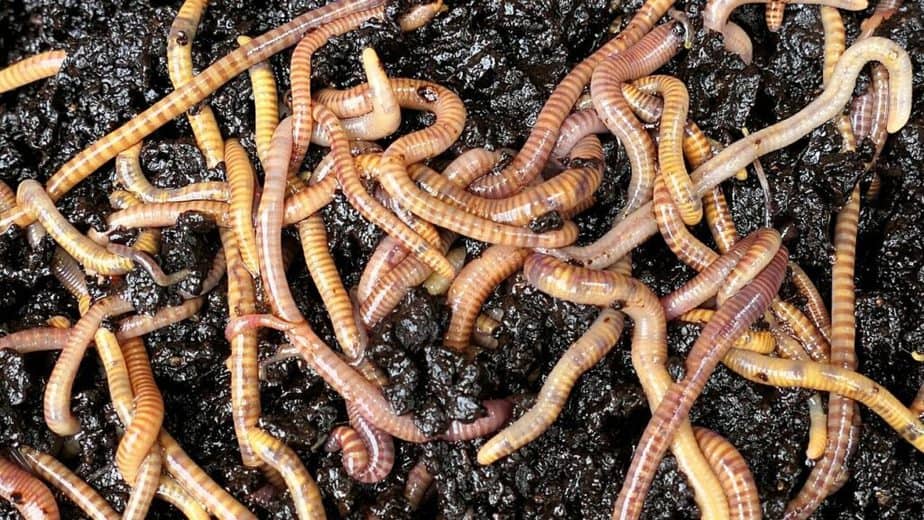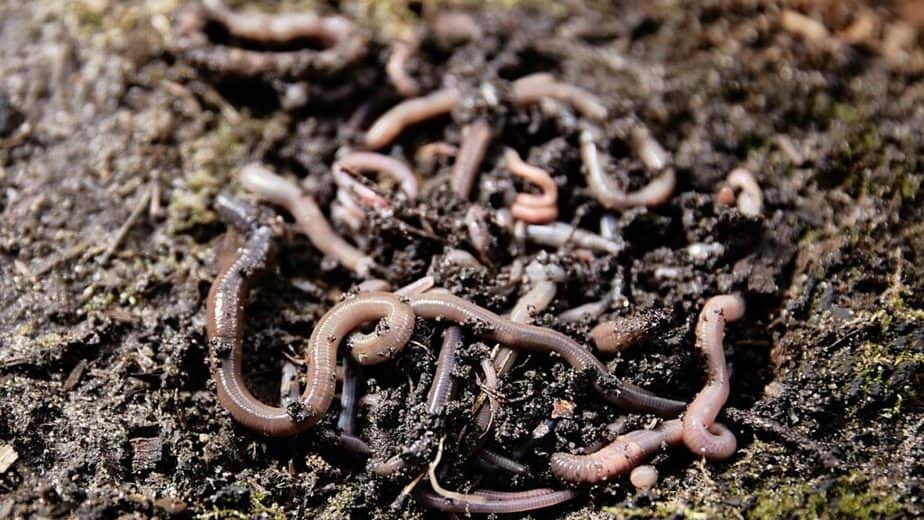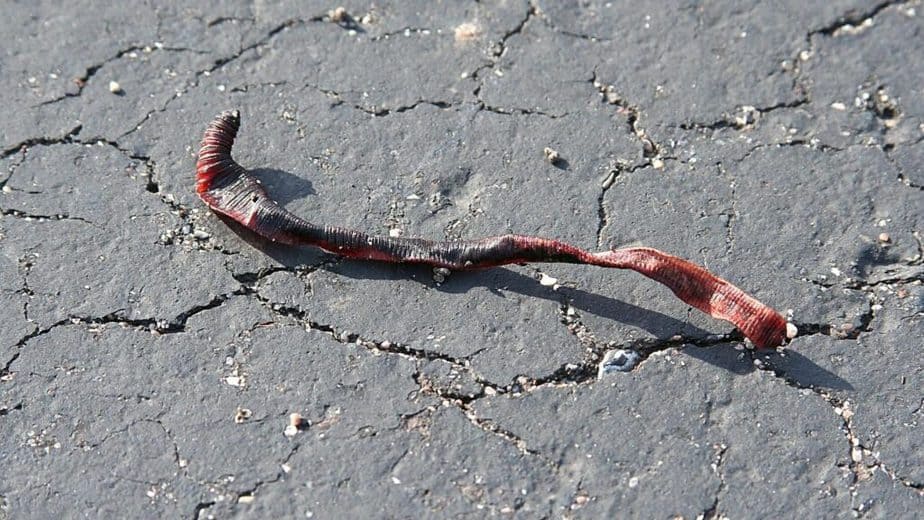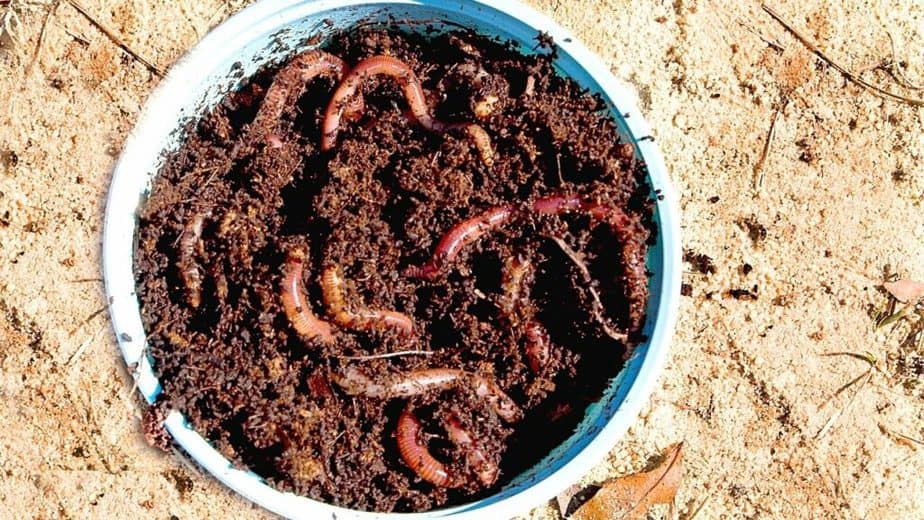The nightcrawler or large earthworm is a creepy-crawly like no other.
As the largest species of earthworm known to man, nightcrawlers or Lumbricus terrestris can reach a staggering length of up to 14 inches (25 centimeters) according to California State University Chico.
Even more impressive is how long nightcrawlers can live in good soil conditions. But, just how long do nightcrawlers live?
Table of Contents
How Long Do Nightcrawlers Live?
On average, nightcrawlers live between five to ten years in ideal soil conditions but have been known to survive for as long as twenty years. This species of earthworm, also known as Lumbricus terrestris, is thought to have the longest lifespan of any worm species.
What a Nightcrawler is
A nightcrawler is a species of earthworm thought to have originated in Europe.
It is now found all over the world but goes by a variety of different names, including lobworm, dew worm, Grandaddy earthworm, and red rainworm.
It can be identified by its reddish color and large size, but also by its peculiar habits. The nightcrawler is so named because it tends to come to the surface of the soil bed at night, unlike most other types of common earthworms.

Nightcrawlers are not as abundantly found as other worms of the same species but are easily recognizable given their stature, color, and movements.
You’ll often see them when it has recently rained, as they emerge to enjoy the cool weather.
They are noticeably larger than other earthworms, hence, fishermen commonly use them as bait.
How Long Nightcrawlers Live
Nightcrawlers can live for an incredibly long time, from five to twenty years.
This is, however, very dependent on the conditions they live in, as they require plenty of nutrition to reach this lengthy life expectancy.
How long they live also depends on whether they are left to thrive undisturbed by human intervention.
A nightcrawler’s diet consists of decomposing or decaying leaves and vegetation.

In perfect ecosystems, they will eat up to half their body weight in plant or animal matter daily, which keeps them healthy and energetic.
The nutrients found in naturally occurring compost are what keep them growing and ultimately what keeps them alive.
Why Nightcrawlers Emerge from the Soil at Night
All ground-dwelling worms breathe through their skin, courtesy of the oxygen naturally found in soil.
That being said, they also enjoy the cool night air and dew found on the surface of the ground, which plays a role in keeping them moist and regulating their body temperatures.
It’s easier for nightcrawlers to move from place to place if the air’s more humid.
During the day, it is too dangerous for nightcrawlers to emerge, as warm temperatures, the sun, and hot air can dry them out.

They are also more susceptible to being snatched by predators during the day, so it’s simply safer for them to stay underground until night falls.
There is a common misconception that nightcrawlers come to the surface of the soil during periods of heavy rainfall so that they don’t become drenched and drown, but this is inaccurate.
Most earthworms can survive “underwater” for extended timeframes because of the oxygen present in water.
They simply prefer to be above ground, where it is easier for them to move, and they can enjoy the moisture and humidity in the air.
They also often travel to the surface of the soil for food. Resource competition is less intense for nightcrawlers above the ground than within it.
How Long Nightcrawlers Live in Containers
Many people keep nightcrawlers to use as fishing bait or as contributors to compost bins.
They can live in containers for two to three months if properly cared for, provided ideal living conditions are met.

In containers, nightcrawlers do best on a diet of kitchen scraps like fruits, vegetables, and coffee grounds.
They need regular misting every two to three days to keep their skin moist, and there should be small holes in their container for oxygen.
Their bedding can comprise top-quality soil that is already rich in vitamins and minerals.
It is not advisable to keep too many nightcrawlers in one container, as this will create a competitive environment where more robust specimens outlive weaker ones.
They also need to be stored in a cool, dark place that emulates their natural environment. These creepies don’t like bright light or hot temperatures, and either of these factors can be devastating to their health and well-being.
Some breeders recommend keeping nightcrawlers in the fridge, but this can be risky.
Overall, a safe bet is to keep them at temperatures around 68 degrees Fahrenheit (20 degrees Celsius) or ever-so-slightly higher.
How Fast Nightcrawlers Reproduce
Nightcrawlers reproduce quickly and often, spawning babies multiple times per year.
However, they have relatively few offspring at a time, usually maxing out at ten to twelve babies, of which only some will survive. It takes about 27 days from mating to live birth.
Once born, a nightcrawler can take about a year to reach physical and sexual maturity and start breeding its own new crop of baby worms.
Frequently Asked Questions about How Long Nightcrawlers Live
How fast do nightcrawlers move?
Nightcrawlers can travel at a speed of up to 20 miles per hour when the air is humid, and the soil is moist. It is estimated that in perfect weather conditions, they will travel up to 20 meters in a single journey above the soil’s surface.
What causes nightcrawlers to die?
Most earthworms die from a lack of resources or too little moisture. Worms eat a lot, so without sufficient nutrients, they are unable to survive. Extreme temperature swings are also dangerous for nightcrawlers as their skin needs to be moist for them to breathe properly.
Are nightcrawlers good for the environment?
All worms contribute to the natural ecosystems of soil. They aerate the soil by burrowing and tunneling through it and also contribute to its nutrient make-up by consuming and processing decaying plant and animal matter.
![How Long Do Nightcrawlers Live? The #1 Best Answer [Solved]](https://thrivingoutdoors.com/wp-content/uploads/2022/04/How-Long-Do-Nightcrawlers-Live-720x540.jpg)
